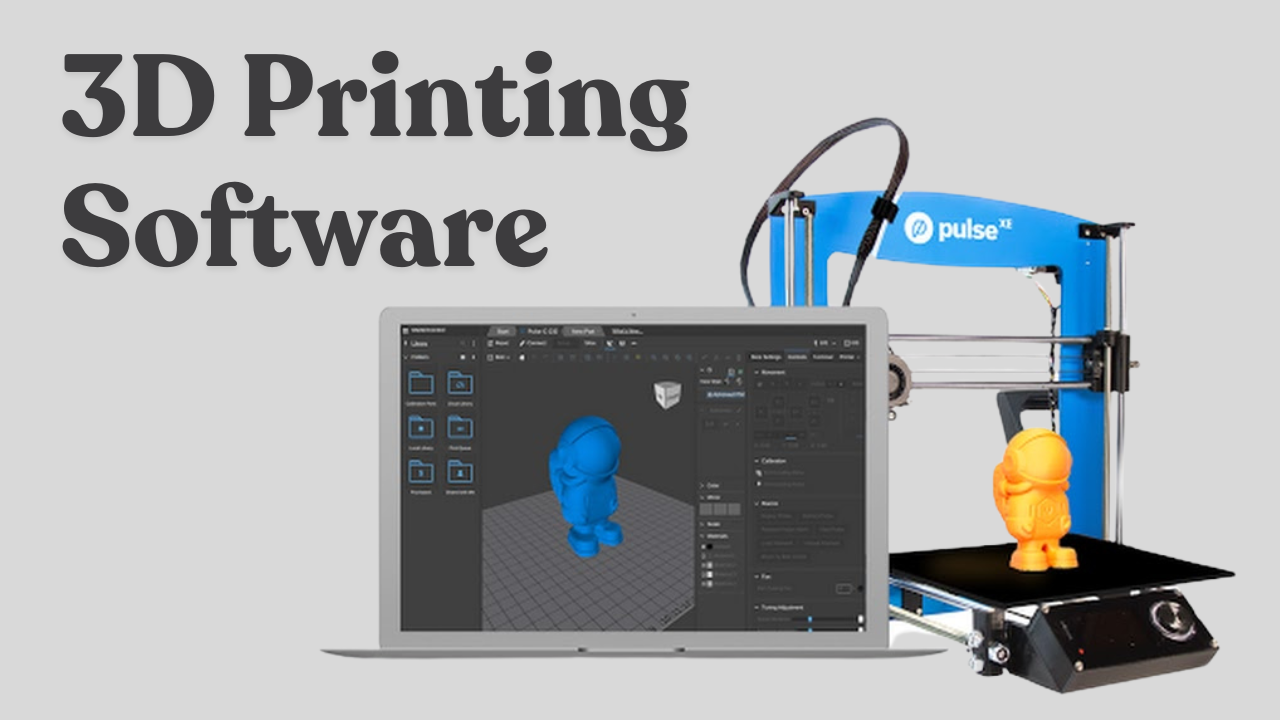The Best 3D Printing Software: A Guide for Beginners and Professionals
Introduction
3D printing is transforming the world, allowing people to create everything from prototypes and tools to art pieces and even medical implants. But before a 3D printer can bring an idea to life, you need the right 3D printing software to design, prepare, and optimize your prints.
If you’re new to 3D printing or looking for better software options, this article will help you understand what 3D printing software does, the different types available, and the best ones to use in 2024.
What is 3D Printing Software?
3D printing software is a set of tools that helps users create, modify, and convert digital 3D models into instructions that a 3D printer can follow. These software programs are essential for designing, slicing, and printing 3D objects accurately.
There are three main types of 3D printing software:
- 3D Modeling Software – Used for creating or modifying 3D designs.
- Slicing Software – Converts 3D models into printable layers and generates G-code (machine instructions).
- Printer Control Software – Helps manage and monitor the 3D printing process.
Let’s dive deeper into each type and the best options available!
READ MORE: 3D-Printed Guns
1. 3D Modeling Software
If you want to design your own 3D objects from scratch, 3D modeling software is what you need. These tools allow you to create shapes, modify existing designs, and prepare models for printing.
Best 3D Modeling Software:
TinkerCAD (Beginner-Friendly)
- Why use it? Free, web-based, and easy to learn.
- Best for: Kids, beginners, and hobbyists.
- Pros: Simple drag-and-drop interface, great for basic shapes and designs.
Fusion 360 (Best for Professionals & Engineers)
- Why use it? Powerful design and engineering tools.
- Best for: Engineers, architects, and professional designers.
- Pros: Advanced features for complex designs, free for students and hobbyists.
Blender (Best for Artists & Animators)
- Why use it? Open-source and packed with artistic tools.
- Best for: 3D artists, animators, and creative projects.
- Pros: Great for sculpting and animation, free to use.
SketchUp (Best for Beginners & Architects)
- Why use it? Easy-to-use interface with good design flexibility.
- Best for: Architects and interior designers.
- Pros: Free version available, user-friendly, great for simple models.
2. Slicing Software
Once you have your 3D model, you need to convert it into a format your 3D printer can understand. This is where slicing software comes in. It breaks down the 3D model into thin layers and generates G-code, the language used by 3D printers.
Best Slicing Software:
Ultimaker Cura (Best Overall)
- Why use it? Free, open-source, and widely compatible.
- Best for: Beginners and advanced users alike.
- Pros: Works with most 3D printers, easy-to-use interface, customizable settings.
PrusaSlicer (Best for Prusa Printers)
- Why use it? Specifically optimized for Prusa 3D printers.
- Best for: Prusa users, but also works with other printers.
- Pros: Great for multi-material printing, many advanced features.
Simplify3D (Best for Advanced Users)
- Why use it? Paid software with high-level customization.
- Best for: Professional users who need advanced print settings.
- Pros: Excellent print quality control, supports multiple printers.
ChiTuBox (Best for Resin Printing)
- Why use it? Designed for SLA/DLP resin printers.
- Best for: Users with resin-based 3D printers.
- Pros: Easy-to-use interface, supports various resin printers.
3. Printer Control Software
Some software tools let you directly control and monitor your 3D printer. This is useful for adjusting print settings in real-time, managing multiple printers, and keeping track of your projects.
Best Printer Control Software:
OctoPrint (Best for Remote Control)
- Why use it? Allows you to monitor and control your 3D printer remotely.
- Best for: People who want to start, stop, and adjust prints from anywhere.
- Pros: Works with Raspberry Pi, web-based interface, supports multiple printers.
Repetier-Host (Best for Advanced Users)
- Why use it? Full control over temperature, speed, and movements.
- Best for: Tuning print settings and controlling multiple printers.
- Pros: Customizable interface, good for experienced users.
MatterControl (Best for All-in-One Solution)
- Why use it? Combines design, slicing, and printer control in one software.
- Best for: Beginners looking for a simple, all-in-one program.
- Pros: Free to use, includes design and slicing tools.
How to Choose the Right 3D Printing Software
With so many options, how do you pick the right software? Here are a few tips:
Beginners: Start with TinkerCAD for modeling and Cura for slicing.
Professionals: Use Fusion 360 for design and Simplify3D for slicing.
Artists & Creative Users: Try Blender for sculpting and animation.
People with Resin Printers: Use ChiTuBox for slicing.
Users Who Want Remote Control: Set up OctoPrint.
If you’re just getting started, don’t worry! Most software offers free versions, so you can try them out before committing to one.
Conclusion
3D printing software is the backbone of creating and producing amazing 3D-printed objects. Whether you’re a beginner or an expert, choosing the right software can make a huge difference in the quality, ease, and success of your prints.
From designing your model to slicing it for printing and monitoring your printer, there’s a software tool for every step of the process. Start with user-friendly options like TinkerCAD and Cura, then explore more advanced programs as you gain experience.
So, what are you waiting for? Pick your software, start designing, and bring your ideas to life with 3D printing!
Would you like recommendations for affordable 3D printers or tips to improve print quality? Let me know how I can help!

